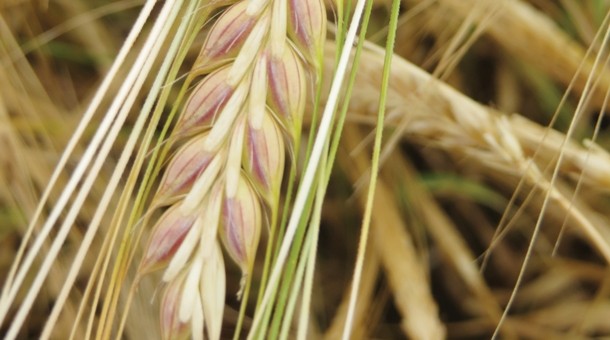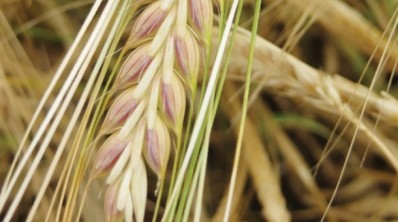Beer special
Why is Maris Otter barley such a loved ingredient for beer aficionados?

The variety in question is used for making some of the country’s best-loved craft beers.
While Maris Otter barley might not be a household name, it has legendary status among beer aficionados. Once malted, it becomes the ingredient by which loyalist brewers swear.
Amazingly, although the proportion of British beer produced with Maris Otter malt is less than 6%, a colossal nine of the most recent 14 Champion Beers of Britain are made with Maris Otter. Quite a record for a humble ingredient.
Worth honouring
Most cereal varieties are superseded within five or six years. 50 years’ continual production is truly exceptional. It is, as Mark Banham (left) from grain merchants H Banham points out, “well worth honouring”. So he has joined forces with David Holliday (right) from Norfolk Brewhouse to create a commemorative beer festival.
Fifty new beers are being created for the Maris Otter 50th Anniversary Festival in Norwich from 17-19 September. They‘re being crafted by brewers from 44 different counties of Britain and six countries from across the world. “This is the first beer festival to have all 50 of its beers brewed specially for the occasion,” says Banham. “As far as we know, it’s also the first birthday party ever to be held for a grain variety!
“People across the industry want to get involved. Of course they’re welcome to come along to the 50th anniversary festival in Norwich, but breweries and pubs can also create their own events.
“The celebration of a barley variety makes for an unusual theme for a beer festival.
“It would work well if other Maris Otter events were organised to coincide with ours, that is 17-19 September. Or they could be part of the Cask Ale Week celebrations from 24 September to 4 October.
“Whatever the timing, breweries and pubs should be able to find an entertaining way to toast the 50th Maris Otter harvest.”
Consistency and depth
Phil Cutter, founder of City of Ale and licensee of the Murderers pub in Norwich, tells fellow licensees that this is a great opportunity to talk about ingredients in beer.
He says: “Few people serving a pint could tell you that the main ingredient of beer is barley malt. Fewer would know that malting is a three-step process — steeping, germinating and kilning. Maris Otter’s 50th birthday is a great excuse to start talking up Britain’s barley growing and malting.
“The reasons brewers give for choosing Maris Otter are down to consistency in terms of brewing performance and the depth of flavour it gives to their brews.
“Back in the 1970s, Maris Otter malt dominated in the brewing world. It later went into deep decline, which by the early 1990s could have been terminal — but it was rescued by grain merchants H Banham and Robin Appel. Its revival has been a big part of the craft brewing revolution taking place on Britain.
“Although the volume of beer made with Maris Otter is small, the choice is large. Licensees should talk to the brewers who supply them to find out if they use it — and make the most of it during this 50th anniversary year.”
The history
Maris Otter is a low-nitrogen winter barley (sown in the autumn, harvested a few weeks before the spring varieties), cross-bred from Proctor and Pioneer in 1965 by the Plant Breeding Institute in Cambridge. Its popularity grew quickly and it dominated the market in the ’70s.
However, by the late ’80s it had fallen out of favour with many larger breweries — and was taken off the NIAB (National Institute of Agricultural Botany) recommended list in 1989.
Despite the snub and fall in volumes, a number of brewers remained loyal to it. They said the malt it produced performed wel in the mash tun, and the resulting beers had a depth of flavour unmatched by those made with other malts. This commitment to the variety encouraged grain merchants H Banham and Robin Appel in their quest to save it.
In 1992, the merchants bought the rights to it — and are still sole owners. There was a lot of work to do to re-establish the purity of the strain and the process of “re-selection” played a crucial role. It involved manually picking out the purest stock and using it to start a new breeding cycle.
The secret plot
H Banham has continued its breeding cycle, using a secret field in the wilds of north Norfolk dedicated to maintaining the integrity of the variety.
“We regularly take a 30m sq patch of our special mother field and go through it manually, checking each and every ear of barley,” says H Banham director Tom Rivett.
“Anything that isn’t a perfect specimen of Maris Otter is discarded. The remaining flawless grain from that patch is harvested separately and used to reseed the mother field. Within seven years, the majority of the Maris Otter grown in Britain will have come from our secret plot.
“It’s a big responsibility, but as custodians of the variety, we’re utterly committed to ensuring its integrity. Cultivation and the checks we make are extremely rigorous. Each year’s crop is measured against control samples to see that it remains true-to-type over generations.
“Of course, we’re lucky in terms of our location,” he adds, “Norfolk’s sunny climate, sea breezes and light soils make ideal growing conditions. Most of the country’s Maris Otter supply is produced — and malted — in our region for that very reason.”
The Market
Despite reaching 50 and being the best known barley malt, Maris Otter remains a specialist variety.
There are now more than 1,400 breweries in Britain, and three new ones are opening each week. With the revival of the craft beer sector, interest in ingredients is extending, and demand for quality malt and hop varieties is growing rapidly.
Bottled ale sales are increasing at about 10% a year and premium cask sales by around 4% — with specialist craft beers even faster. In the 10 years to 2003, an average of 25,000 tonnes a year of Maris Otter barley was bought by maltsters, whereas in the 10 years to 2013 this had grown to 34,500 tonnes a year. That’s an increase of almost 40%.
Maris Otter is now exported to over 20 countries worldwide.
The Brewers
Rupert Farquharson, managing director at Woodforde’s brewery said: “Maris Otter is regarded as the Rolls Royce of brewing barley and has legendary status amongst beer enthusiasts and brewers.
"It was used in our very first brew of Wherry on 5th April 1981 and we continue to use it today thanks to the quality of flavour it produces. The fact that the variety thrives in the growing conditions in North Norfolk is an added bonus for us as it means that we’re using another local ingredient in our beer.”
James Buchanan at Thornbridge said: ‘Here at Thornbridge we use a great amount of Maris Otter, a fantastic heritage variety which gives us a superior wort and as a result helps give a great taste to our beers!’






